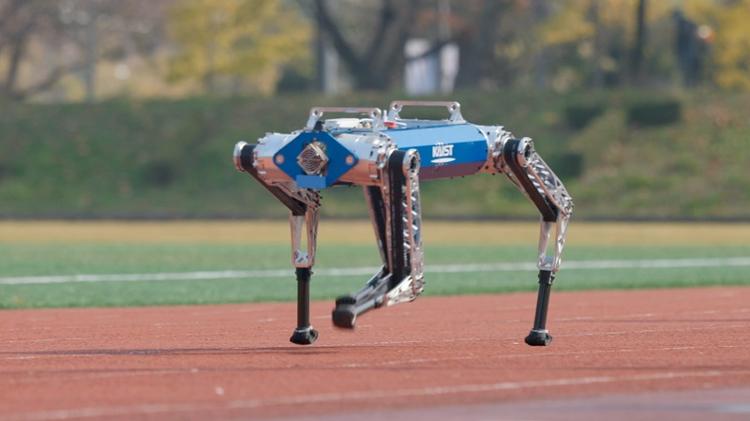TL;DR:
- KAIST’s AI robot, Hound, sets a new 100-meter world record for quadruped robots, certified by Guinness World Records.
- Achieved a remarkable time of 19.87 seconds on an outdoor track in Daejeon.
- Hound aims to secure an indoor record with a top speed of 6.5 meters per second.
- Developed using reinforcement learning for advanced AI capabilities.
- Innovative hardware improvements, including lightweight leg materials.
- Prof. Park Hae-won applied for the Guinness World Record recognition of the indoor record.
- The Agency for Defense Development’s funding supports the project, demonstrating Korea’s leading role in robot hardware and AI self-control.
Main AI News:
In an impressive feat of technological prowess, the Korea Advanced Institute of Science and Technology (KAIST) proudly announces a groundbreaking achievement in the world of robotics. According to Guinness World Records, KAIST’s remarkable creation, the KAIST Hound, has shattered the 100-meter world record for quadruped robots, ushering in a new era of innovation.
Developed by the renowned Dynamic Robot Control and Design Laboratory at KAIST, the KAIST Hound astounded the world with its exceptional performance. On October 26, this AI marvel clocked an astonishing time of 19.87 seconds at KAIST’s outdoor track in Daejeon. This remarkable achievement cements KAIST’s position as a global leader in robotics and artificial intelligence.
But the triumph doesn’t stop there. The KAIST Hound has set its sights on an indoor record, aiming to secure yet another accolade. When put to the test on a treadmill, this remarkable creation achieved a maximum velocity of 6.5 meters per second. This remarkable feat eclipses the previous record set by Cheetah 2, developed by the Massachusetts Institute of Technology, which recorded a speed of 6.4 seconds.
The visionary mind behind this extraordinary creation, Prof. Park Hae-won, is leaving no stone unturned. He has formally applied to Guinness World Records for recognition of the indoor record, a testament to his unwavering dedication to pushing the boundaries of what AI-powered robotics can achieve.
The secret behind the KAIST Hound’s remarkable sprinting technique lies in the ingenious application of reinforcement learning, a data-driven mechanism for AI learning. Prof. Park’s team painstakingly programmed a self-learning system for the Hound, meticulously fine-tuning the motor’s maximum torque and implementing a velocity-enhancing system. This intricate process has unlocked the full potential of this exceptional AI creation.
Not stopping at software improvements, the team also undertook the challenge of optimizing the robot’s hardware. They redesigned the robot’s legs using lightweight materials, ensuring that the Hound achieves a perfectly balanced and symmetrical four-legged movement. This innovative approach has not only improved performance but also reduced the robot’s overall weight.
Prof. Park, an expert in the control and design of dynamic robot systems, legged locomotion robots, and bio-inspired robots, proudly asserts, “Hound has proven that Korea possesses globally undisputable technologies in robot hardware and robotic self-control AI.”
Behind this groundbreaking achievement stands the support of the Agency for Defense Development, under the country’s Defense Acquisition Program Administration, which provided crucial funding in 2019 for the research and development of the KAIST Hound. Their visionary investment has paved the way for this extraordinary accomplishment, marking a significant milestone in the world of robotics.
Conclusion:
The exceptional performance of KAIST’s Hound in breaking the 100-meter world record signifies a significant leap forward in the field of robotics and artificial intelligence. This achievement underscores Korea’s global leadership in both robot hardware and AI self-control technology, potentially opening up new market opportunities and partnerships in the rapidly evolving robotics industry.

